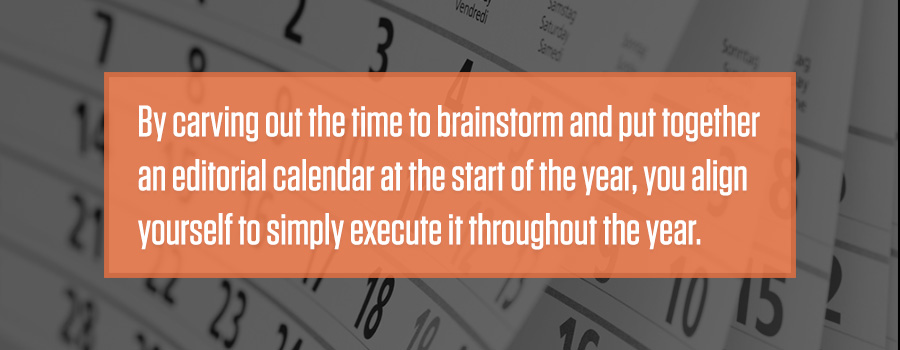
Why You Need An Editorial Calendar
Whenever you think email marketing, a few key things come to mind: killer design, attention-grabbing content and responsive development. What keeps all of those things together? The devil is in the details, and an editorial calendar is the secret link that keeps your email marketing campaign from derailing.

First and foremost, what is an editorial calendar? This is a spreadsheet outlining target distribution dates, key milestones set to meet the distribution dates (content due, design due, development due, testing due, etc.), distribution lists/segments per email, email type(s) (newsletter, promo, etc.) and topics for each scheduled distribution. Of course, the topics are never cast in concrete. They need to be flexible to accommodate news items as you go, but having an idea of what you’ve sent and what you want to send is key.
There are three main reasons an editorial calendar is mission critical:
- It’s one of the biggest, if not the biggest, reason — to keep your campaign on schedule and to adhere to a consistent distribution frequency. In the strategy phase, one important decision is the distribution frequency for your campaign. Once you find the sweet spot of sending enough emails to keep readership engaged, but not oversending and annoying your readership, it’s important to always send at that frequency. Believe it or not, a month flies by in the blink of an eye. When you factor in time to write, design, develop and distribute a campaign, it gets challenging to squeeze all those components into a 20-business day timeline. By having key milestones for each of these steps, you can be sure you hit them and everything runs smooth.
- When the first of the month hits, it can be a scramble to get all of these key components (content, design, etc.) running. If you have to add topic ideation, you’re in a mess. Here’s where the editorial calendar saves the day, yet again. Simply open your editorial calendar, and you’re staring at the email type you’re scheduled to send and the topic(s) that need to be covered. Instead of spending hours waiting for inspiration to strike for creation of the perfect topic, all you have to do is send inputs to your writers about the topic you selected at the beginning of the year. Done and done! Get the gears in motion.
- Last but certainly not least — content consistency. By doing a “year in review” in January — to review your campaign from the previous year and plan your campaign for the upcoming year — you’ll be putting together an editorial calendar that will be consistent. Your topics will be cohesive because you can see how one topic flows into another from month to month. This helps maintain a consistent overall tone for all of your emails, and allows you to alternate the email type you send (promo email, newsletter, etc.). Without this, it becomes easy to get stuck in a rut from month to month.
Bonus reason: You need to have the ability to schedule distributions in order to strategically hit or avoid holidays. Depending on your email topic, it can be mission critical to hit or avoid certain holidays. For instance, if you’re in the business of selling insurance, you’re not going to want to send your most enticing offer during Thanksgiving when everyone is spending time with loved ones — and insurance is the least of their concerns. However, if you’re in the business of selling TVs, Black Friday is the time to send your most enticing offer — when people are looking for the deal of a lifetime to watch the big games. Because a lot goes into creating an email, the key milestones outlined in your editorial calendar ensure that each production team meets its deadline, and doesn’t force you to miss one of the most important events for which you’re planning your distribution.
By carving out the time to brainstorm and put together an editorial calendar at the start of the year, you align yourself to simply execute it throughout the year. This helps you to know what your topic is ahead of time so you don’t have to go back to the drawing board at the start of every month, helps to schedule and coordinate all teams involved, and avoids the pitfall many fall into — sending an email whenever inspiration hits (which can be seldom)!




